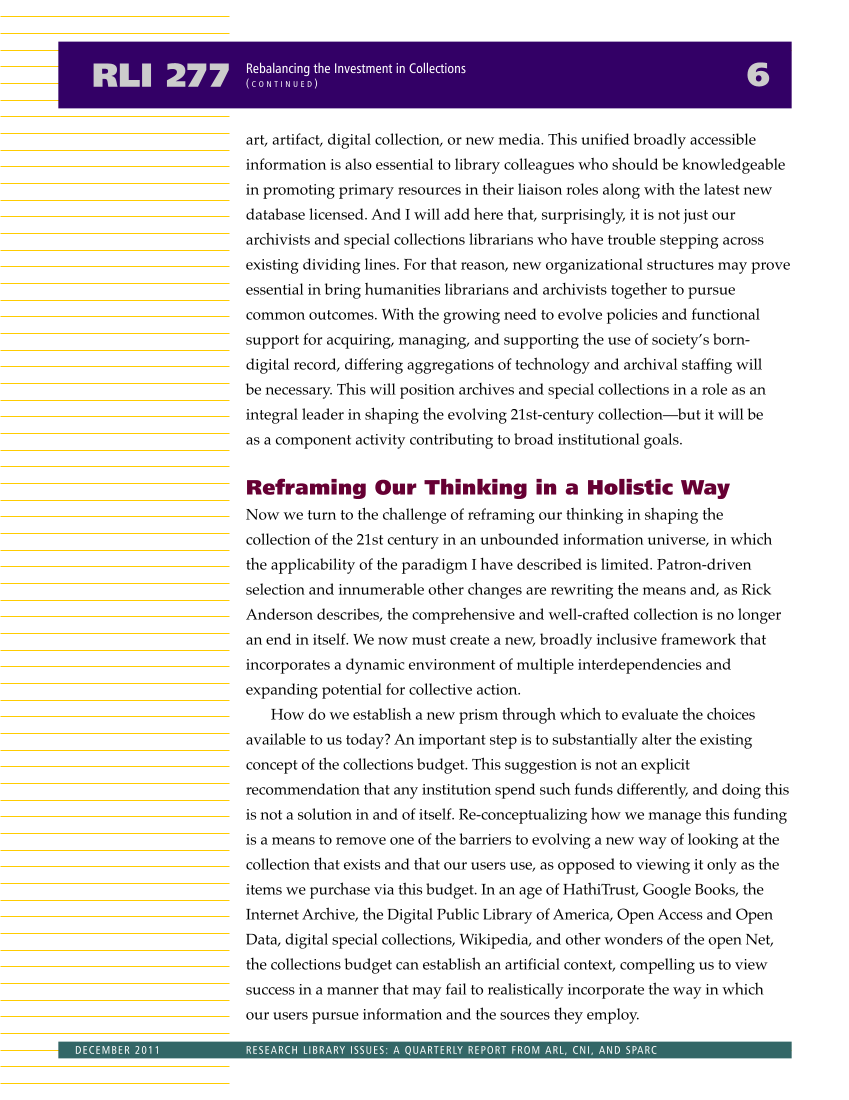art, artifact, digital collection, or new media. This unified broadly accessible information is also essential to library colleagues who should be knowledgeable in promoting primary resources in their liaison roles along with the latest new database licensed. And I will add here that, surprisingly, it is not just our archivists and special collections librarians who have trouble stepping across existing dividing lines. For that reason, new organizational structures may prove essential in bring humanities librarians and archivists together to pursue common outcomes. With the growing need to evolve policies and functional support for acquiring, managing, and supporting the use of society’s born- digital record, differing aggregations of technology and archival staffing will be necessary. This will position archives and special collections in a role as an integral leader in shaping the evolving 21st-century collection—but it will be as a component activity contributing to broad institutional goals. Reframing Our Thinking in a Holistic Way Now we turn to the challenge of reframing our thinking in shaping the collection of the 21st century in an unbounded information universe, in which the applicability of the paradigm I have described is limited. Patron-driven selection and innumerable other changes are rewriting the means and, as Rick Anderson describes, the comprehensive and well-crafted collection is no longer an end in itself. We now must create a new, broadly inclusive framework that incorporates a dynamic environment of multiple interdependencies and expanding potential for collective action. How do we establish a new prism through which to evaluate the choices available to us today? An important step is to substantially alter the existing concept of the collections budget. This suggestion is not an explicit recommendation that any institution spend such funds differently, and doing this is not a solution in and of itself. Re-conceptualizing how we manage this funding is a means to remove one of the barriers to evolving a new way of looking at the collection that exists and that our users use, as opposed to viewing it only as the items we purchase via this budget. In an age of HathiTrust, Google Books, the Internet Archive, the Digital Public Library of America, Open Access and Open Data, digital special collections, Wikipedia, and other wonders of the open Net, the collections budget can establish an artificial context, compelling us to view success in a manner that may fail to realistically incorporate the way in which our users pursue information and the sources they employ. RLI 277 6 Rebalancing the Investment in Collections ( C O N T I N U E D ) DECEMBER 2011 RESEARCH LIBRARY ISSUES: A QUARTERLY REPORT FROM ARL, CNI, AND SPARC































